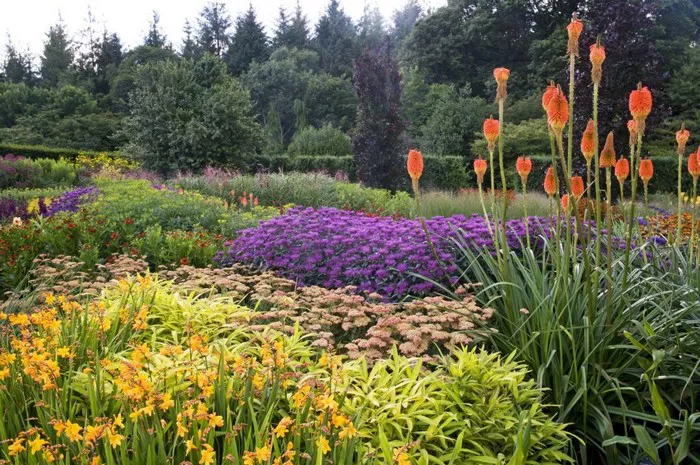Herbaceous plants are a diverse group of vegetation that play a crucial role in ecosystems and human societies alike. Defined by their soft, non-woody stems, herbaceous plants encompass a wide array of species, ranging from delicate wildflowers to robust crops. Understanding the characteristics, types, and uses of herbaceous plants is essential for gardeners, botanists, ecologists, and anyone interested in the natural world.
Characteristics of Herbaceous Plants
The defining characteristic of herbaceous plants is their lack of woody tissue in their stems. Unlike trees and shrubs, which have persistent woody stems, herbaceous plants have soft, green stems that typically die back to the ground at the end of each growing season. This distinction is fundamental in plant taxonomy and ecology, as it influences the plant’s growth habits, lifespan, and ecological role.
Herbaceous plants exhibit several key characteristics:
Soft Stems: Herbaceous plants have stems that lack the rigidity and density of woody tissue. These stems are typically green and flexible, allowing for rapid growth and adaptation to environmental conditions.
Annual, Biennial, or Perennial Lifespan: Herbaceous plants can be classified based on their lifespan. Annual herbaceous plants complete their life cycle within a single growing season, germinating from seed, flowering, and producing seeds before dying back. Biennial herbaceous plants have a two-year life cycle, typically germinating and producing foliage in the first year, then flowering and setting seeds in the second year before dying. Perennial herbaceous plants persist for multiple years, regrowing from the same root system each year.
Herbaceous Foliage: The leaves of herbaceous plants are generally soft and flexible, lacking the thick, waxy cuticle often found in woody plants. This foliage is adapted for rapid photosynthesis and water uptake, supporting the plant’s growth and reproduction.
Adaptability: Herbaceous plants often exhibit high adaptability to changing environmental conditions. Their flexible stems and rapid growth allow them to respond quickly to fluctuations in temperature, moisture, and light levels.
Reproductive Strategies: Herbaceous plants employ a variety of reproductive strategies, including seed production, vegetative propagation, and specialized mechanisms such as runners, bulbs, or rhizomes.
Types of Herbaceous Plants
The diversity of herbaceous plants is staggering, encompassing a wide range of species adapted to various climates, habitats, and ecological niches. While it’s impossible to categorize every herbaceous plant, they can be broadly classified into several groups based on their growth habits, reproductive strategies, and ecological roles.
Wildflowers: Wildflowers are herbaceous plants that grow in natural habitats, including meadows, forests, and grasslands. They often have showy flowers adapted for pollination by insects, birds, or other animals. Examples of wildflowers include sunflowers (Helianthus spp.), lupines (Lupinus spp.), and black-eyed Susans (Rudbeckia hirta).
Grasses and Sedges: Grasses and sedges are a large group of herbaceous plants characterized by their narrow leaves and often inconspicuous flowers. Grasses, such as wheat (Triticum spp.) and rice (Oryza sativa), are economically important as food crops, while sedges, such as Carex spp., play crucial roles in wetland ecosystems.
Vegetables and Culinary Herbs: Many herbaceous plants are cultivated for their edible foliage, fruits, or roots. Common culinary herbs include basil (Ocimum basilicum), parsley (Petroselinum crispum), and cilantro (Coriandrum sativum), while popular vegetables include tomatoes (Solanum lycopersicum), carrots (Daucus carota), and lettuce (Lactuca sativa).
Annual Bedding Plants: Annual bedding plants are herbaceous plants grown for their ornamental value in gardens and landscapes. These plants are often planted en masse for seasonal color displays and include species such as petunias (Petunia spp.), marigolds (Tagetes spp.), and impatiens (Impatiens spp.).
Perennials: Perennial herbaceous plants persist for multiple years, regrowing from their root systems each year. They are popular in gardens and landscapes for their longevity and ability to provide year-round interest. Examples of perennial herbaceous plants include hostas (Hosta spp.), daylilies (Hemerocallis spp.), and ornamental grasses (such as Miscanthus spp. and Pennisetum spp.).
Uses of Herbaceous Plants
Herbaceous plants serve a multitude of purposes in both natural and cultivated environments. Their ecological roles, economic importance, and aesthetic value make them indispensable components of ecosystems and human societies worldwide.
Ecological Functions: In natural ecosystems, herbaceous plants fulfill essential ecological functions, including soil stabilization, erosion control, and habitat provision. Their foliage provides food and shelter for a diverse array of insects, birds, and other wildlife, contributing to overall ecosystem biodiversity.
Food Production: Many herbaceous plants are cultivated as food crops, providing sustenance for human populations around the globe. Staple crops such as wheat, rice, maize (corn), and potatoes are all derived from herbaceous plants. Additionally, vegetables, fruits, and culinary herbs contribute to a diverse and nutritious diet.
Medicinal Uses: Numerous herbaceous plants have medicinal properties and have been used for centuries in traditional medicine systems. Plants such as echinacea (Echinacea spp.), ginseng (Panax spp.), and chamomile (Matricaria chamomilla) are valued for their purported health benefits and are used in various herbal remedies and supplements.
Ornamental Horticulture: Herbaceous plants are widely used in ornamental horticulture for their aesthetic appeal. They are planted in gardens, parks, and landscapes to enhance visual interest, provide seasonal color, and create attractive outdoor spaces. From delicate wildflowers to bold foliage plants, herbaceous ornamentals offer endless possibilities for garden design.
Soil Improvement: Certain herbaceous plants, known as cover crops or green manures, are grown specifically to improve soil health and fertility. These plants, such as clover (Trifolium spp.), vetch (Vicia spp.), and rye (Secale cereale), are planted in fallow fields or between cash crops to prevent soil erosion, suppress weeds, and add organic matter to the soil through decomposition.
Conclusion
Herbaceous plants represent a diverse and invaluable component of the plant kingdom, contributing to ecosystems, economies, and human well-being in myriad ways. From wildflowers dancing in meadows to fields of waving grain, herbaceous plants enrich our lives with their beauty, utility, and ecological significance. By understanding the characteristics, types, and uses of herbaceous plants, we can better appreciate and steward these vital resources for generations to come.


